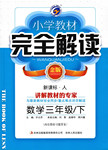题目内容
第二节 回答问题(共3小题;每小题2分,满分6分)
阅读下面短文,根据第58至60小题的具体要求,简要回答问题,并将答案转写到答题卡上。
Healthy Diets
Instead of buying only fresh foods,Americans nowdays buy many more convenience foods.There are foods which are already partly or completely prepared .Many of them are frozen,such as frozen dinner,heat-and-serve French fries ,and frozen pizzas.There are also many canned (put in a can) convenience foods. such as ready-made spaghetti (意大利细条实心面),soups,stews (炖熟菜肴),and vegetables.
Convenience foods save time and trouble.They are popular with people who are busy or who don’t like to cook or wash dishes.But they ofen cost more than fresh ,unprepared foods and may contain artificial additives (a chemical added to the food).Also,many people feel they don’t taste as good as home cooked foods.
Health food and Co-ops
In the 1960s,a“back-to-the-earth”movement was started by young people in the United States.The movement was a reaction against the harmful effects of technology.From the movement came a new understanding of food and health.Many people now prefer natural and organic(chemical-free)foods to the prepared foods sold in health food stores and in food co-ops,which are small stores and where customers help manage the store .In co-ops,food is usually not packaged.Customers bring their own bags and jars and scoop(汲取) their food out of boxes or baskets.
58.What are the disadvantages of convenience foods?
____________________________________ ____________________________________
59. Convenience foods are popular with people who ____________________________________
____________________________________ ____________________________________
60.How do customers buy food from co-ops?
____________________________________ ____________________________________
58. They often cost more than fresh, unprepared foods and may contain artificial additives (a chemical added to the food). Also, many people feel they don’t taste as good as home cooked foods.
59. who are busy or who don’t like to cook or wash dishes.
60. In co-ops, food is usually not packaged. Customers bring their own bags and jars and scoop their food out of boxes or baskets.

 小学教材完全解读系列答案
小学教材完全解读系列答案